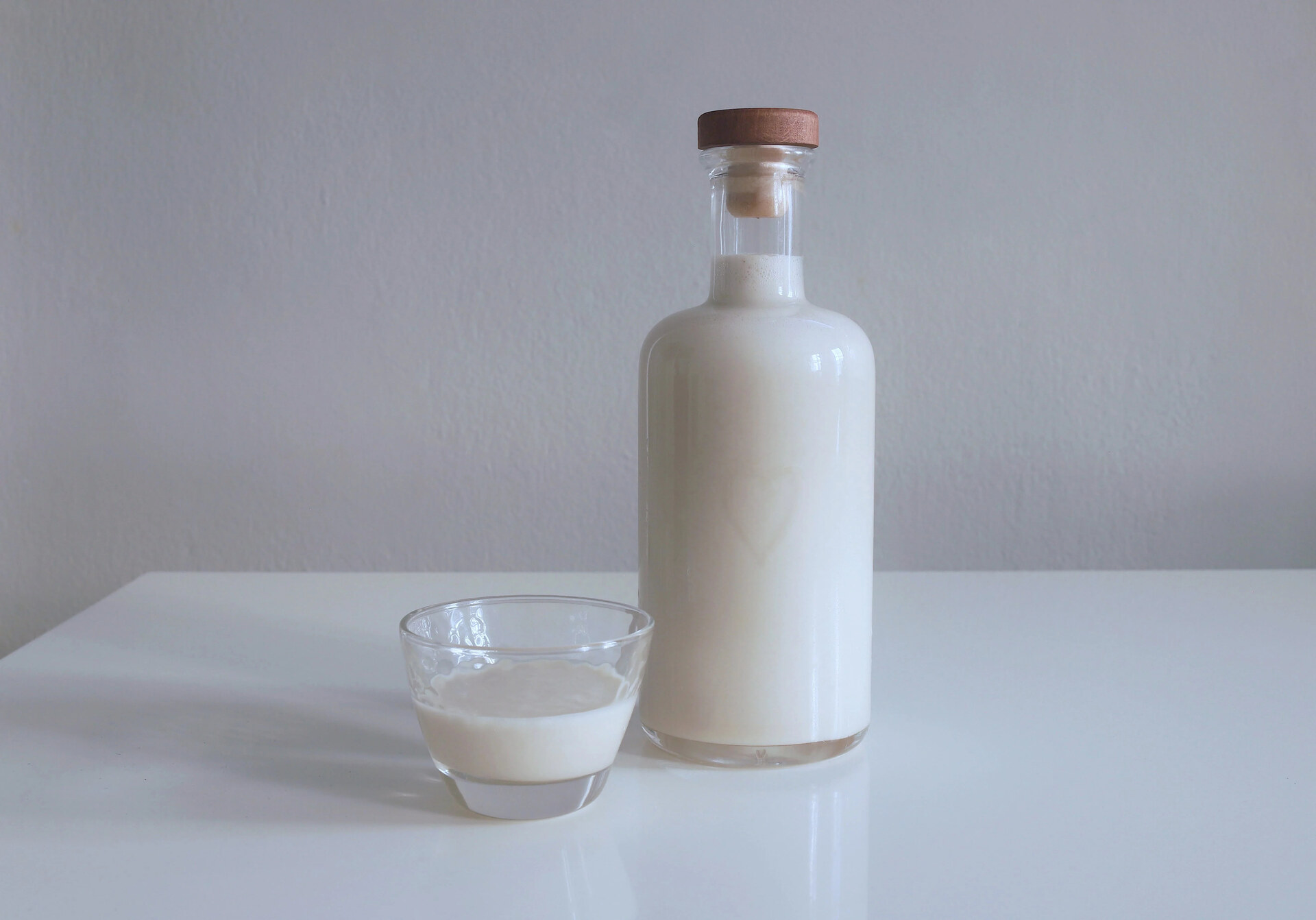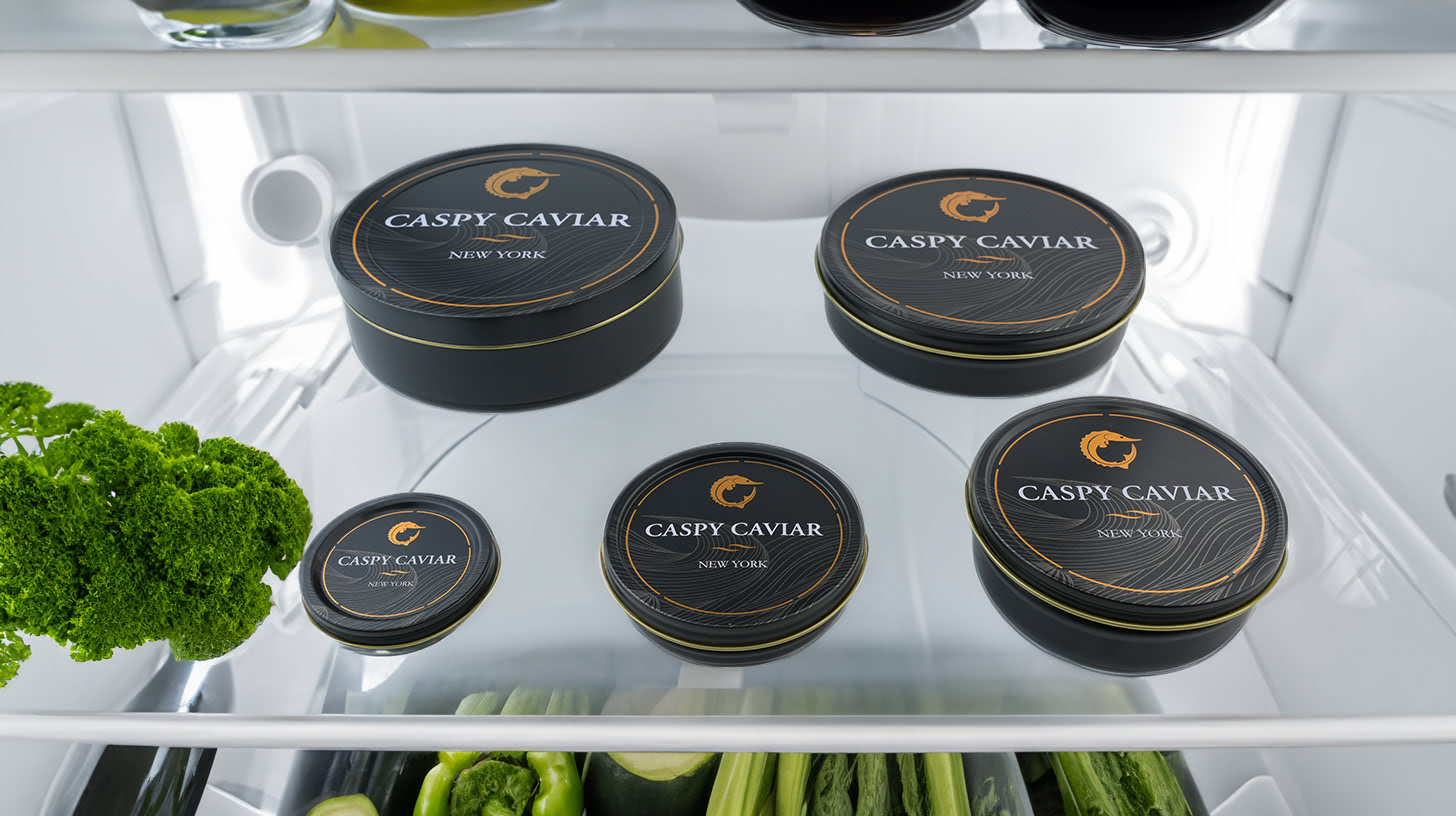

Articles
How To Store Marzipan
Modified: October 21, 2024
Learn the best storage techniques for marzipan in this informative article. Discover how to keep your marzipan fresh and delicious for longer periods.
(Many of the links in this article redirect to a specific reviewed product. Your purchase of these products through affiliate links helps to generate commission for Storables.com, at no extra cost. Learn more)
Introduction
Marzipan is a delightful confection made from ground almonds and sugar, often shaped into various figures or used as a filling for pastries. Its sweet, nutty flavor and smooth, malleable texture have made it a popular treat in many cultures around the world. Whether you enjoy marzipan on its own or incorporated into a delicious dessert, it’s important to know how to store it properly to maintain its freshness and quality.
In this article, we will explore the reasons why you need to store marzipan, the factors to consider before storing it, and the proper techniques for storing marzipan at different temperatures. We will also discuss the shelf life of marzipan and provide tips on how to extend its longevity. Lastly, we will delve into how to determine if marzipan has gone bad and should no longer be consumed.
If you’re a fan of marzipan or simply curious about this delectable treat, keep reading to learn how to store marzipan effectively and enjoy its deliciousness for as long as possible.
Key Takeaways:
- Proper storage of marzipan is crucial to maintain its freshness, texture, and flavor. Whether at room temperature, in the refrigerator, or freezer, following the right storage techniques can significantly extend its shelf life and preserve its delightful taste.
- Regularly inspect stored marzipan for any signs of spoilage, including mold growth, texture changes, or off odors. By following the tips mentioned in this article, you can enhance the shelf life of marzipan and enjoy its deliciousness for a longer period.
Read more: How To Store Store-Bought Bread
What is Marzipan?
Marzipan is a sweet confection that originated in the Middle East and has been enjoyed for centuries. It is made from a mixture of finely ground almonds and sugar, resulting in a smooth and pliable dough-like substance. Additional ingredients such as egg whites, almond extract, and flavorings like rosewater or citrus zest may also be added to enhance the taste.
The history of marzipan can be traced back to ancient Persia, where it was initially used as a medicinal remedy. Over time, its popularity spread throughout the Middle East and into Europe, where it became a beloved treat and a staple in festive culinary traditions.
Marzipan is known for its distinctive almond flavor and delicate sweetness. The combination of the finely ground almonds and sugar creates a unique texture that is both smooth and slightly grainy. This makes marzipan extremely versatile in its use – it can be molded into intricate shapes, rolled out and used as a cake covering, or simply enjoyed as bite-sized treats.
One of the key characteristics of marzipan is its ability to hold its shape and maintain its texture. This makes it a preferred medium for creating decorative elements on cakes and pastries. From intricately crafted marzipan fruits to detailed figurines, marzipan allows for artistic expression and adds an elegant touch to any dessert.
Marzipan is not only enjoyed on its own but is also a popular ingredient in many traditional desserts around the world. It is commonly used as a filling in chocolates and sweets, incorporated into pastries such as stollen and battenberg cake, and even used as a topping for fruitcakes and tarts.
Now that we have a better understanding of what marzipan is and its versatility, let’s explore why proper storage is crucial to maintain its freshness and quality.
Why Do You Need to Store Marzipan?
Proper storage of marzipan is essential to maintain its quality and ensure its longevity. Here are a few reasons why you need to store marzipan:
- Preserve Freshness: Marzipan contains perishable ingredients like almonds and sugar. Without proper storage, it can quickly dry out or become exposed to moisture, resulting in a change in texture and flavor. Storing marzipan correctly helps to retain its freshness and prevent it from becoming stale.
- Extend Shelf Life: Marzipan can have a relatively long shelf life if stored properly. By following the correct storage techniques, you can significantly extend the lifespan of your marzipan, allowing you to enjoy it over an extended period.
- Maintain Texture: Marzipan has a unique texture that is both smooth and slightly grainy. Improper storage can cause it to become dry and hard, compromising its delightful texture. Storing marzipan according to the appropriate guidelines helps to maintain its soft and pliable consistency.
- Protect from Contamination: Like any food product, marzipan can be susceptible to contamination from bacteria or mold if not stored correctly. Proper storage techniques help to minimize the risk of contamination, ensuring the safety of the marzipan and your health.
Whether you have store-bought marzipan or homemade marzipan, the need for proper storage remains the same. By taking the necessary steps to store your marzipan correctly, you can enjoy its deliciousness whenever you desire and avoid wasting this precious treat.
Factors to Consider Before Storing Marzipan
Before you store marzipan, there are a few factors to consider to ensure that it stays fresh and maintains its quality. Let’s take a closer look at these factors:
- Packaging: The packaging of marzipan is crucial for maintaining its freshness. Whether your marzipan comes in a sealed package or is homemade, it’s important to ensure that it is tightly wrapped or stored in an airtight container to prevent air exposure and moisture absorption.
- Temperature: Marzipan is sensitive to temperature fluctuations. Extreme heat can cause it to melt or become sticky, while the cold can make it hard and brittle. It’s essential to store marzipan at the appropriate temperature to maintain its texture. We will explore different storage techniques based on temperature shortly.
- Humidity: Marzipan can absorb moisture from the environment, causing it to become soft and lose its shape. It’s crucial to protect marzipan from high humidity levels by storing it in a dry environment or using moisture-absorbing materials, such as silica gel packets.
- Odors: Marzipan can easily pick up odors from strong-smelling foods if not properly stored. Avoid storing marzipan near foods with strong odors, such as onions or spices, to prevent the transfer of flavors. It’s best to store marzipan in a separate container or wrap it in plastic wrap to protect it from odorous contamination.
- Handling: Marzipan is delicate and can easily be damaged or deformed if mishandled. When storing marzipan, be gentle and avoid pressing or squeezing it too tightly. This will help maintain its shape and structure, ensuring it looks as good as it tastes when you’re ready to use it.
By taking these factors into consideration, you’ll be well-prepared to store marzipan properly and preserve its freshness and quality. Now, let’s move on to the different storage techniques for marzipan based on temperature.
Proper Storage Techniques for Marzipan
To ensure that marzipan stays fresh and maintains its texture, it’s important to store it correctly. The storage technique you choose will depend on the length of time you plan to store the marzipan and your personal preferences. Here are three common storage techniques for marzipan:
- 4.1 Room Temperature Storage: If you plan to consume the marzipan within a week or so, room temperature storage can be suitable. Ensure that the marzipan is tightly wrapped in plastic wrap or stored in an airtight container to prevent air exposure and maintain its freshness. Keep it in a cool, dry place away from direct sunlight and strong odors. Check the marzipan regularly for signs of spoilage, such as mold or dryness.
- 4.2 Refrigeration Storage: Refrigeration is a good option if you want to extend the shelf life of marzipan for up to a month. Wrap the marzipan tightly in plastic wrap or place it in an airtight container before refrigerating. The cool temperature helps to slow down the staling process and maintain the texture of the marzipan. Before consuming refrigerated marzipan, allow it to come to room temperature to regain its softness and flavor.
- 4.3 Freezing Storage: Freezing is the best option for long-term storage, allowing you to keep marzipan for several months. Wrap individual portions of marzipan tightly in plastic wrap or place them in freezer-safe bags. Ensure that there is no air trapped inside the wrapping to prevent freezer burn. Frozen marzipan should be thawed in the refrigerator overnight before using. Note that freezing may slightly alter the texture of marzipan, but it will still be delicious and usable.
Choose the storage technique that aligns with your needs and the desired shelf life of the marzipan. Remember to label the storage containers with the date to keep track of its freshness and usage timeline.
Now that you know the various storage techniques for marzipan, let’s explore how long marzipan can be stored before it starts to deteriorate.
Read more: How To Store Basil From Grocery Store
1 Room Temperature Storage
Room temperature storage is an option for short-term storage of marzipan, typically up to a week. It is important, however, to ensure that the room temperature environment is cool and dry to prevent the marzipan from spoiling. Here are some guidelines for storing marzipan at room temperature:
- Tightly wrap the marzipan: Before storing marzipan at room temperature, ensure that it is tightly wrapped in plastic wrap or stored in an airtight container. This will prevent air exposure, which can cause the marzipan to dry out and lose its freshness.
- Choose a cool, dry location: Find a cool spot in your home to store the marzipan. Avoid areas that are exposed to direct sunlight or heat sources, as this can cause the marzipan to melt or become sticky. Additionally, ensure that the storage area is dry to prevent moisture absorption, which can affect the texture of the marzipan.
- Avoid strong odors: Keep the marzipan away from strongly scented foods, as marzipan can easily absorb odors. This can affect the flavor and aroma of the marzipan. Consider storing it in a separate container or using aroma-blocking packaging materials to protect it from odor contamination.
- Check for signs of spoilage: Regularly inspect the marzipan for any signs of spoilage, such as mold growth or dryness. If you notice any changes in texture, color, or smell, discard the marzipan as it may no longer be safe to consume.
Remember that marzipan stored at room temperature may gradually lose its freshness and become less enjoyable over time. It is best to consume room-temperature-stored marzipan within a week to ensure optimal quality.
Now that you know how to store marzipan at room temperature, let’s explore the next storage technique: refrigeration storage.
Store marzipan in an airtight container at room temperature, away from direct sunlight and heat sources. It can also be refrigerated for longer shelf life, but bring it to room temperature before using.
2 Refrigeration Storage
Refrigeration is a suitable option for storing marzipan if you want to extend its shelf life for up to a month. The cool temperature of the refrigerator helps to slow down the staling process and maintain the texture of the marzipan. Follow these guidelines for refrigeration storage:
- Wrap the marzipan tightly: Before refrigerating marzipan, ensure that it is tightly wrapped in plastic wrap or placed in an airtight container. This will protect it from air exposure, which can cause the marzipan to dry out or absorb odors from other foods in the refrigerator.
- Select an appropriate storage location: Choose a spot in the refrigerator where the temperature is consistently cool. Avoid placing the marzipan near the door or in areas that may be exposed to temperature fluctuations. Consider placing it on a shelf towards the back of the refrigerator, away from any strong-smelling foods.
- Allow it to come to room temperature before consuming: When you’re ready to enjoy the refrigerated marzipan, allow it to come to room temperature before consuming. This will restore its softness and enhance the flavor. Remove the tightly wrapped marzipan from the refrigerator and let it sit at room temperature for around 30 minutes to thaw.
- Check for freshness: Regularly check the refrigerated marzipan for any signs of spoilage, such as mold growth or an off odor. If you notice any changes in its appearance, texture, or smell, it’s best to discard the marzipan as it may have gone bad and is no longer safe to consume.
Refrigeration is an excellent choice if you want to prolong the shelf life of marzipan without compromising its taste and texture. Just remember to tightly wrap the marzipan, choose an appropriate storage location, and allow it to come to room temperature before enjoying it.
Now that you’ve learned about refrigeration storage, let’s explore another storage technique: freezing marzipan.
3 Freezing Storage
Freezing marzipan is an ideal option for long-term storage, allowing you to preserve its freshness and quality for several months. Here’s how to properly freeze marzipan:
- Divide marzipan into portions: Divide the marzipan into smaller, manageable portions before freezing. This will make it easier to thaw only the amount you need, without having to thaw the entire batch.
- Tightly wrap in plastic wrap: Individually wrap each portion of marzipan tightly in plastic wrap, ensuring there are no air pockets. Alternatively, you can place the marzipan in an airtight container or freezer-safe bag.
- Label and date: Label the wrapped portions of marzipan with the date of freezing to keep track of its freshness. This way, you can easily identify how long it has been in the freezer when it’s time to thaw and consume.
- Freeze in a single layer: Place the wrapped portions of marzipan in a single layer on a baking sheet or freezer-safe tray. This will prevent them from sticking together and allow for even freezing.
- Transfer to a freezer-safe container: Once the marzipan portions are frozen solid, transfer them to a freezer-safe container or resealable freezer bag. Be sure to remove any excess air from the packaging to prevent freezer burn.
- Store in the freezer: Place the container of frozen marzipan in the coldest part of the freezer. This will help maintain a consistent low temperature, ensuring that the marzipan remains frozen and free from any potential contamination.
- Thaw before using: When you’re ready to use the frozen marzipan, remove the desired portion from the freezer and let it thaw in the refrigerator overnight. Thawing in the refrigerator gradually brings the marzipan to its optimal texture without compromising its flavor.
- Check for quality: Before consuming thawed marzipan, inspect it for any signs of spoilage, such as mold or an off odor. If you notice any changes in texture, color, or smell, discard the marzipan as it may have deteriorated during freezing or thawing.
By following these freezing storage guidelines, you can keep marzipan in the freezer for several months, allowing you to enjoy this delightful treat whenever you desire.
Now that you’re familiar with the proper storage techniques for marzipan, let’s move on to the next section and explore how long marzipan can be stored before it starts to deteriorate.
How Long Can Marzipan Be Stored?
The storage life of marzipan can vary depending on the storage conditions and the specific ingredients used. While marzipan can generally have a relatively long shelf life, it’s important to keep in mind several factors that can affect its storage duration. Here are some guidelines for how long marzipan can be stored:
- Room temperature storage: Marzipan stored at room temperature can typically last for up to a week. However, it’s important to regularly check for any signs of spoilage, such as mold growth, dryness, or an off odor. If you notice any changes in the marzipan’s appearance or smell, it’s best to discard it.
- Refrigeration storage: When stored in the refrigerator, marzipan can maintain its quality for up to a month. Remember to tightly wrap the marzipan to prevent it from drying out or absorbing odors. Thaw the refrigerated marzipan to room temperature before consuming.
- Freezing storage: Marzipan stored in the freezer can be kept for several months. When properly wrapped and stored in airtight containers or freezer-safe bags, frozen marzipan maintains its quality for an extended period. Be sure to check for any signs of spoilage before consuming thawed marzipan.
It’s important to note that while marzipan can generally be stored for these durations, its quality may gradually deteriorate over time. Factors such as temperature fluctuations, exposure to air or moisture, and the specific ingredients used can affect its shelf life. Therefore, it’s always recommended to check for signs of spoilage before consuming marzipan that has been stored for an extended period.
Now that you know how long marzipan can be safely stored, let’s move on to some tips for extending its shelf life.
Read more: How To Store Tinctures
Tips for Extending the Shelf Life of Marzipan
To prolong the shelf life of marzipan and maintain its freshness, consider following these helpful tips:
- Proper packaging: Ensure that marzipan is tightly wrapped in plastic wrap or stored in an airtight container to prevent exposure to air and moisture. This helps to maintain its texture and flavor.
- Storage temperature: Store marzipan in a cool and dry environment to prevent melting or drying out. Keep it away from intense heat sources and direct sunlight that can affect its quality.
- Separate storage: Store marzipan separately from strongly scented foods to prevent it from absorbing odors. Place it in its own sealed container or use aroma-blocking materials to maintain its original flavor.
- Regular inspection: Check on stored marzipan periodically for any signs of spoilage, such as mold growth, dryness, or an off odor. If any changes are noticed, discard the marzipan to prevent consuming spoiled or unsafe product.
- Portion control: Divide marzipan into smaller portions before storage. This allows you to defrost only the amount you need, minimizing waste and ensuring the freshness of the remaining marzipan.
- Thawing carefully: When thawing frozen marzipan, ensure a gradual transition by thawing it in the refrigerator. This helps to preserve its texture and prevent moisture loss.
- Labeling: Label storage containers with the date of storage to keep track of the marzipan’s freshness. This allows you to easily identify how long it has been stored and decide if it’s still suitable for consumption.
By following these tips, you can extend the shelf life of marzipan and enjoy its deliciousness for a longer period. However, always rely on your senses to determine the quality of stored marzipan, as visual and olfactory cues are reliable indicators of spoilage.
Next, let’s explore how to recognize if marzipan has gone bad.
How to Tell if Marzipan Has Gone Bad
Like any food product, marzipan can go bad if not stored or handled properly. Here are some signs to look out for to determine if marzipan has gone bad:
- Mold: If you notice any fuzzy or discolored patches on the surface of the marzipan, it is a clear indication of mold growth. Mold can develop due to exposure to moisture or poor storage conditions. In such cases, it’s best to discard the marzipan to avoid potential health risks.
- Texture: Fresh marzipan has a smooth and slightly grainy texture. If the marzipan feels excessively dry, hard, or crumbly, it may have gone bad. Changes in texture can occur due to improper storage or extended exposure to air, indicating a loss of freshness and quality.
- Off odor: If the marzipan emits a sour or unpleasant odor, it is a strong indication of spoilage. A noticeable change in smell can be a sign of bacterial growth or deterioration. Trust your sense of smell and discard marzipan with an off odor.
- Discoloration: Marzipan should maintain its natural color, which is typically a pale golden or beige hue. If you notice any unusual discoloration, such as dark spots or a greenish tint, it may indicate spoilage or the presence of mold. In such cases, it’s best to err on the side of caution and discard the marzipan.
- Taste: If the marzipan tastes off, stale, or has a strange flavor, it is an indication that it has gone bad. Fresh marzipan has a distinct almond flavor and a delicate sweetness. Any noticeable deviation from its usual taste should be a cause for concern.
If you observe any of these signs in marzipan, it’s crucial to discard it immediately. Consuming spoiled marzipan can lead to foodborne illnesses and unpleasant experiences. It’s always better to be safe than sorry when it comes to expired or deteriorated food products.
By storing marzipan properly, regularly inspecting it, and trusting your senses, you can ensure that you enjoy fresh and safe marzipan every time.
Now, let’s wrap up this article.
Conclusion
In conclusion, knowing how to store marzipan properly is essential to maintain its freshness, texture, and quality. Whether you prefer homemade marzipan or store-bought varieties, following the right storage techniques can significantly extend its shelf life and preserve its delightful taste.
Room temperature storage can keep marzipan fresh for up to a week, as long as it is tightly wrapped and stored in a cool, dry place. If you want to extend its shelf life, refrigeration storage can maintain marzipan’s quality for up to a month. Tightly wrapping the marzipan and placing it in the coldest part of the refrigerator is crucial. Freezing marzipan is the best option for long-term storage, allowing you to keep it for several months. Properly wrapping and labeling frozen marzipan portions will help maintain their quality.
Remember to consider factors such as packaging, temperature, humidity, odors, and handling before storing marzipan. These factors can affect its longevity and freshness. Regularly inspect stored marzipan for any signs of spoilage, including mold growth, texture changes, or off odors.
By following the tips mentioned in this article, you can enhance the shelf life of marzipan and enjoy its deliciousness for a longer period. However, always rely on your senses to determine if marzipan has gone bad. Signs such as mold, texture changes, off odors, discoloration, or an unpleasant taste indicate spoilage and should prompt you to discard the marzipan to ensure your safety.
Whether you’re using marzipan for baking, decorations, or simply enjoying it on its own, proper storage techniques will help you savor its mouthwatering flavor and smooth texture. So, next time you indulge in marzipan, remember to store it correctly to make the most of this delightful treat!
Frequently Asked Questions about How To Store Marzipan
Was this page helpful?
At Storables.com, we guarantee accurate and reliable information. Our content, validated by Expert Board Contributors, is crafted following stringent Editorial Policies. We're committed to providing you with well-researched, expert-backed insights for all your informational needs.














0 thoughts on “How To Store Marzipan”